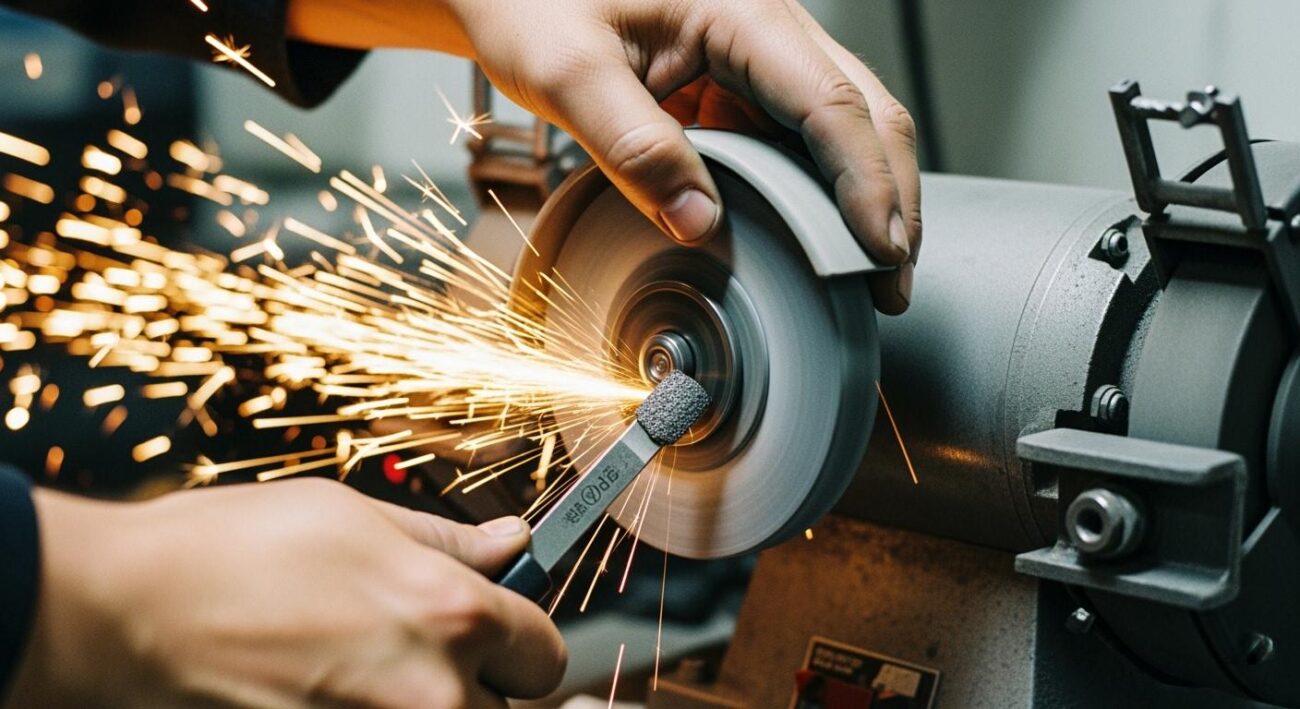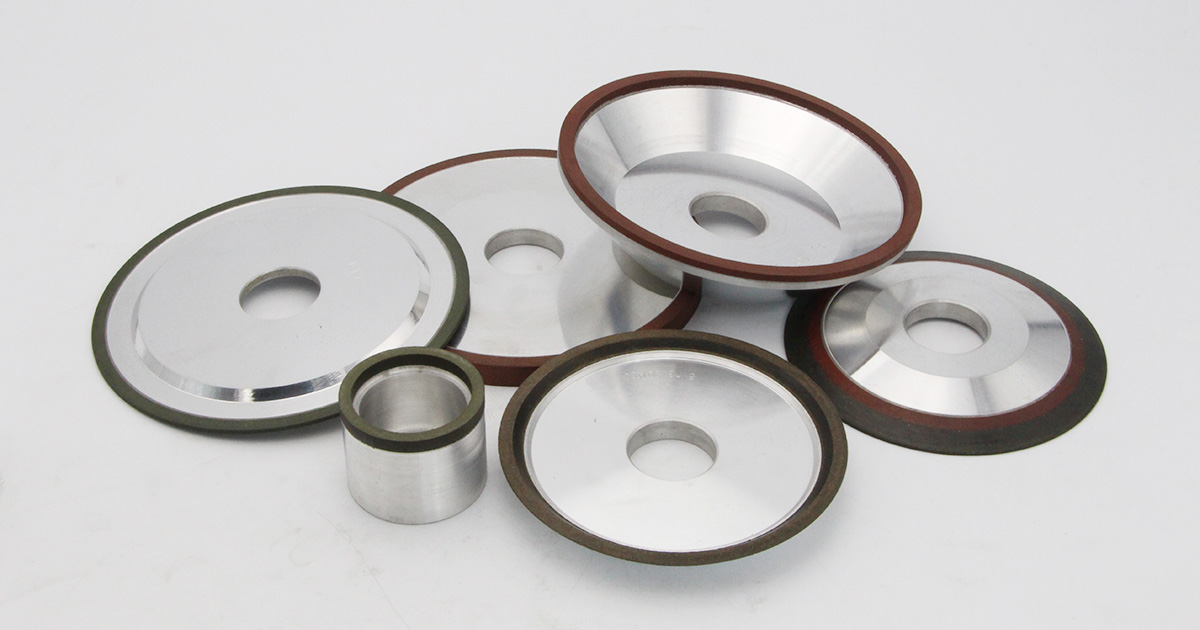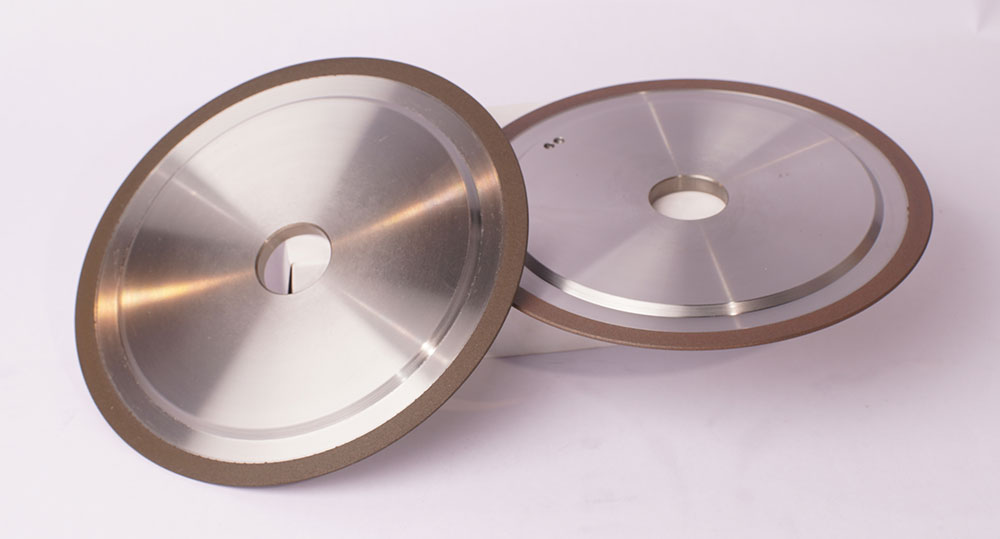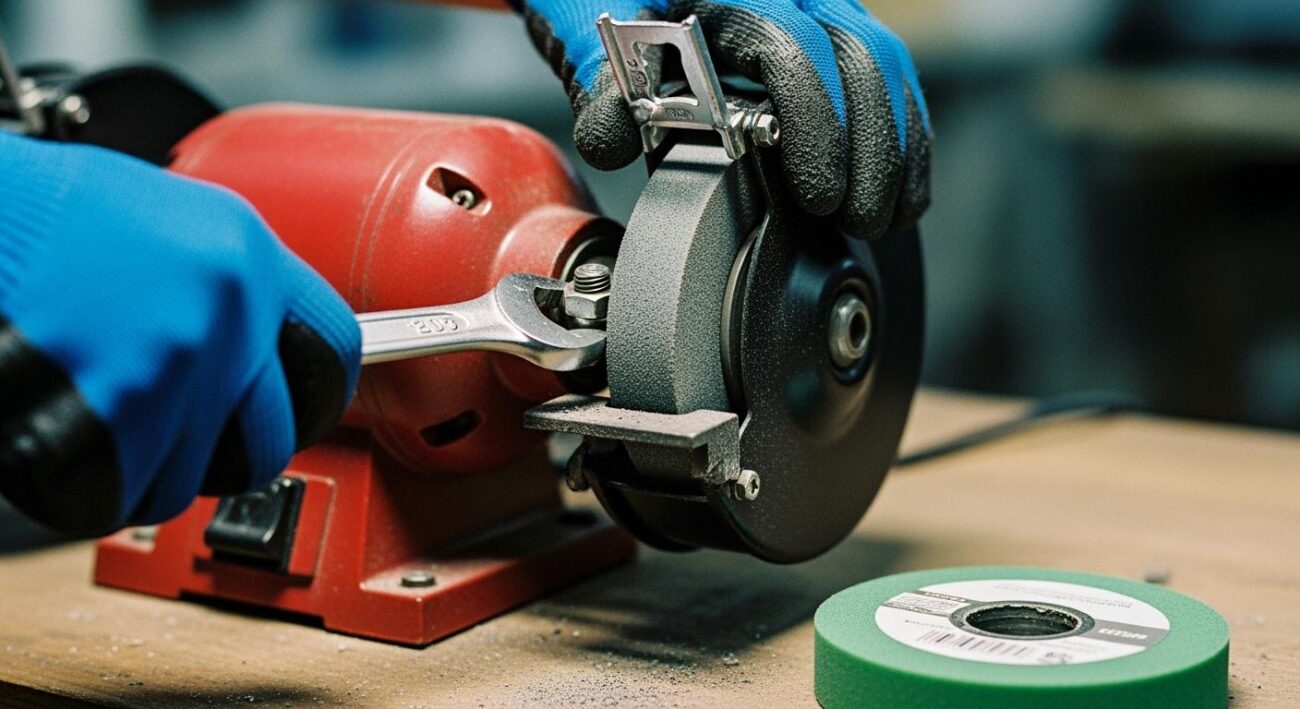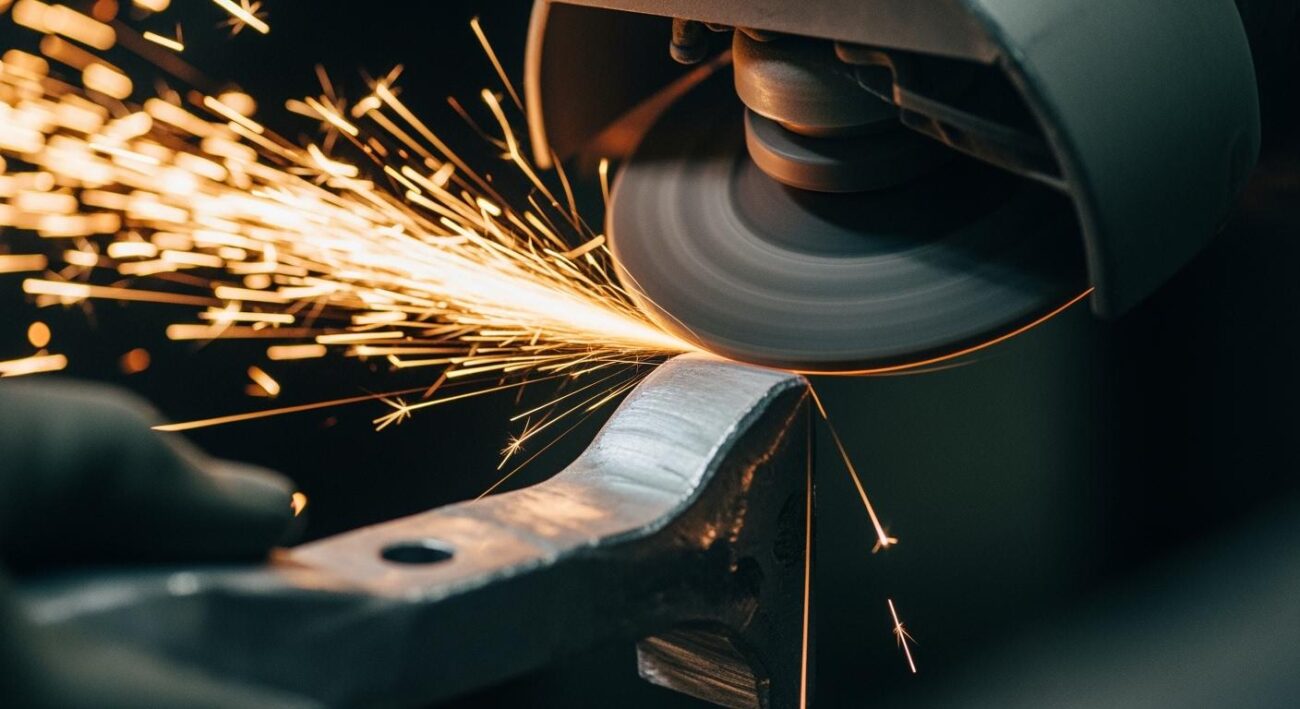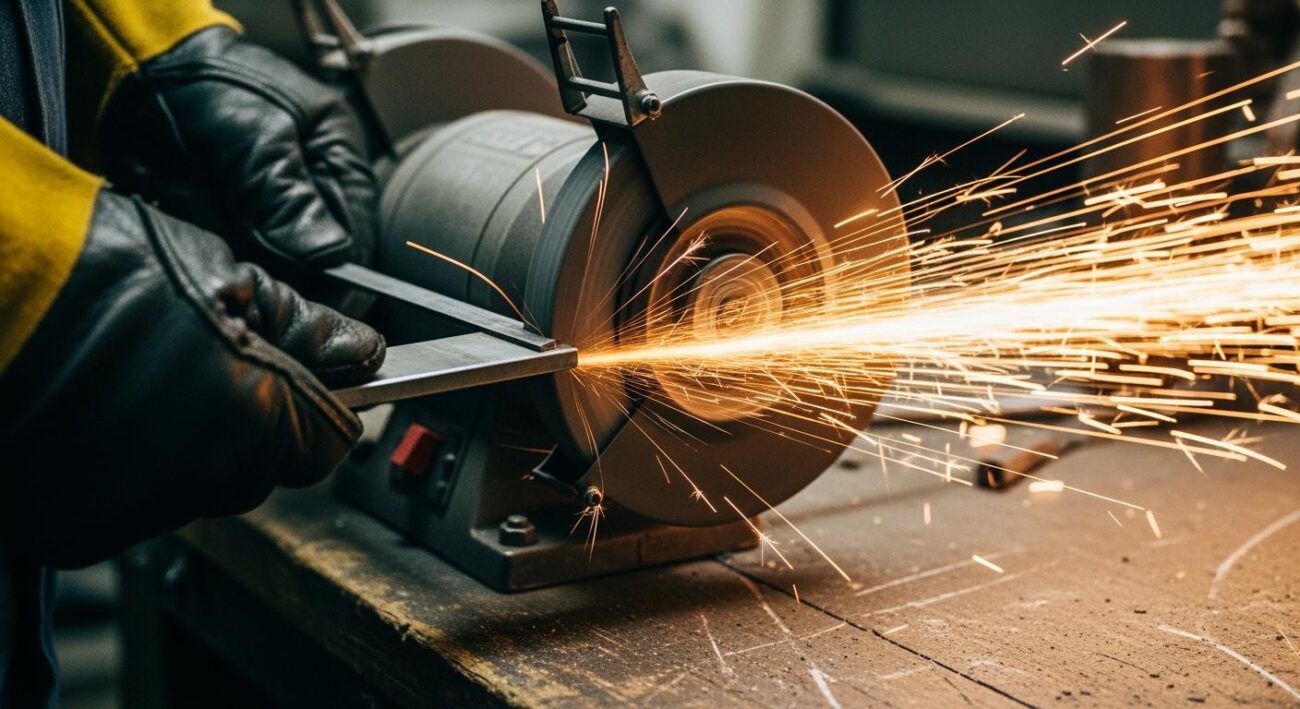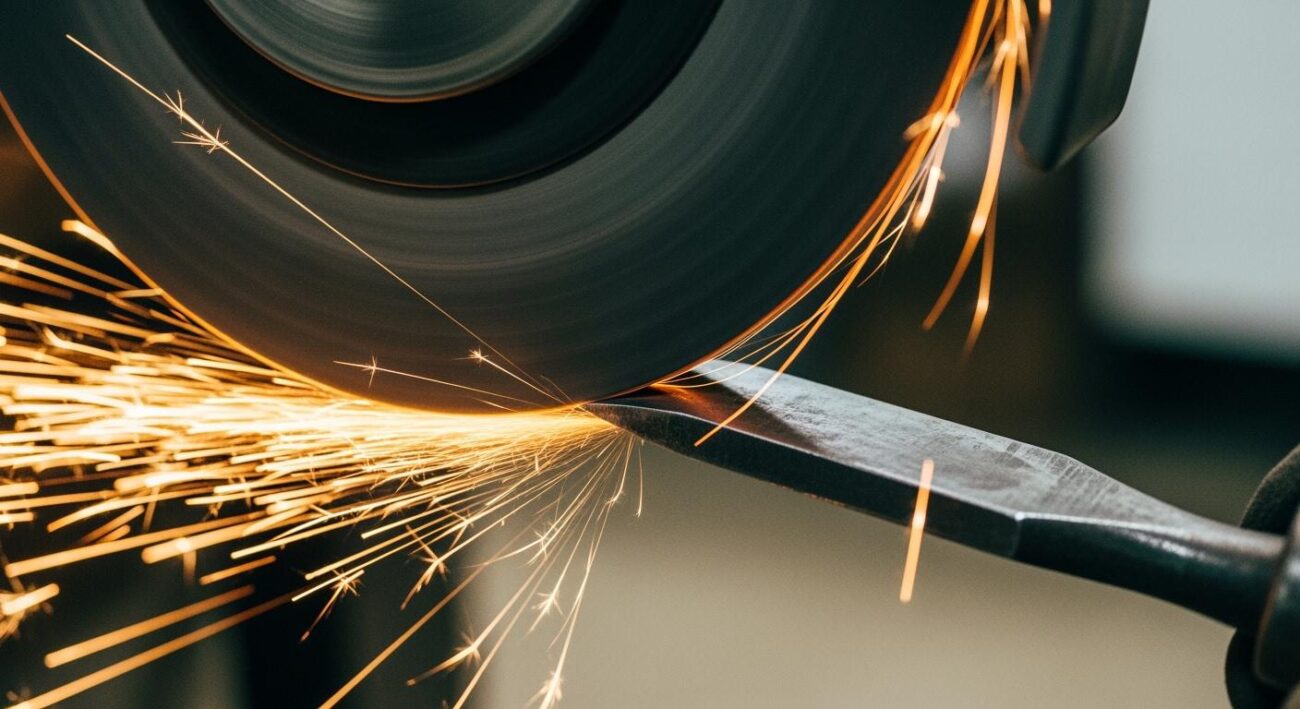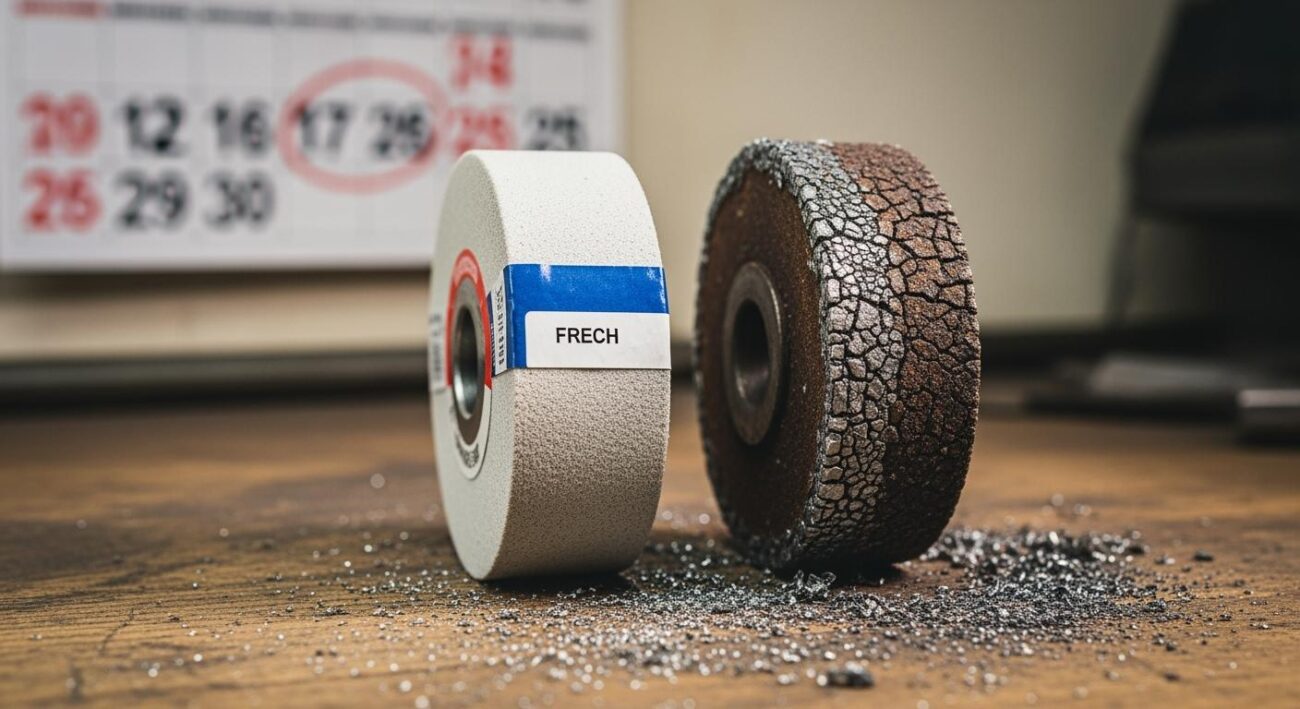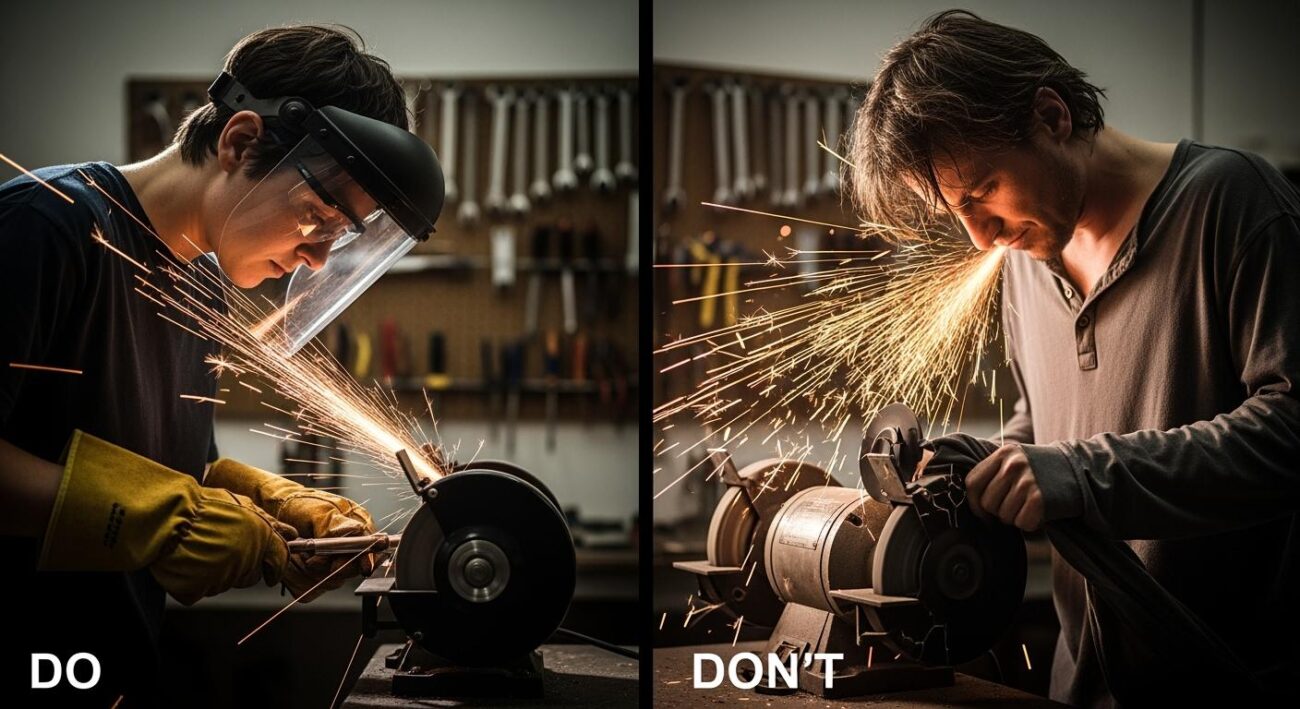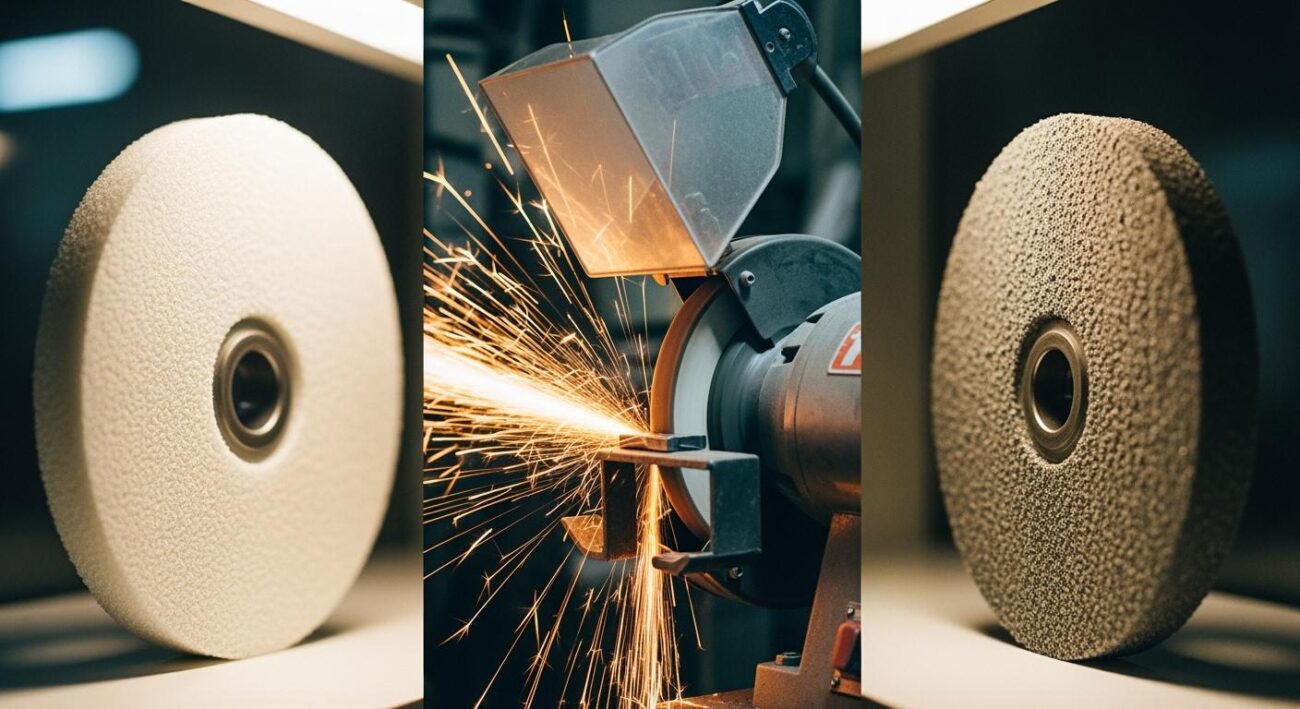You can keep your grinding wheel sharpened through a process of sharpening called ‘dressing’. Dressing cleans the wheel by removing clogged metal and dull abrasive material. This action restores the tool’s cutting ability for safer, more effective grinding. You perform this essential sharpening with a dressing tool, such as a sharpening stone.
Important Safety Note: Over half of all incidents with a grinding wheel involve operator mistakes. Proper maintenance, like keeping the wheel sharpened, is crucial for safe grinding.
Key Takeaways
- Sharpening a grinding wheel is called ‘dressing.’ This process cleans the wheel and makes it cut better.
- You need to sharpen your wheel when it looks shiny, has material stuck to it, or shakes a lot.
- Always wear safety glasses, a face shield, and gloves when you sharpen a grinding wheel.
- Use a special tool like a dressing stick or a diamond dresser to clean the wheel’s surface.
- Move the dressing tool slowly and evenly across the wheel to make it sharp and smooth.
When Your Grinding Wheel Needs Sharpening
Knowing when your grinding wheel needs sharpening is key to effective and safe work. You can look for three main signs: a loaded wheel, a glazed wheel, or an out-of-round wheel. Identifying these issues early helps you maintain your tool’s performance.
Spotting a Loaded Wheel
You will know your wheel is loaded when it stops grinding effectively. Material clogs the spaces between the abrasive grit, making the surface smooth. You can often see this buildup on the wheel’s face.
When you are grinding, you will feel the difference immediately. A loaded wheel behaves like a dull tool, forcing you to push harder to get any cutting action. This increased pressure can be dangerous and may even cause the wheel to fracture.
A loaded wheel also harms your workpiece. Debris stuck to the abrasive grains will rub against your material instead of cutting it. This creates more heat, vibration, and a poor surface finish.
Recognizing a Glazed Wheel
A glazed wheel looks shiny and feels smooth to the touch. This happens when the abrasive particles on the surface wear down and become dull. Glazing is different from loading because no material is clogging the wheel; the grit itself is just worn out.
Several things can cause glazing:
- Grinding very hard materials with a wheel bond that is too hard.
- Using the wrong type of coolant during the grinding process.
- Applying too much pressure, which flattens the abrasive particles.
A glazed surface will rub instead of cut, generating excessive heat and making your sharpening efforts useless.
Checking for an Out-of-Round Wheel
An out-of-round wheel is a serious issue. You will notice a strong vibration as soon as you turn the grinder on. The wheel will not spin evenly, causing it to bounce or “hop” against your workpiece. This makes precise grinding impossible and creates an unsafe working condition. If you notice this, you must stop and dress the wheel immediately to restore its shape.
Tools for Sharpening a Grinding Wheel
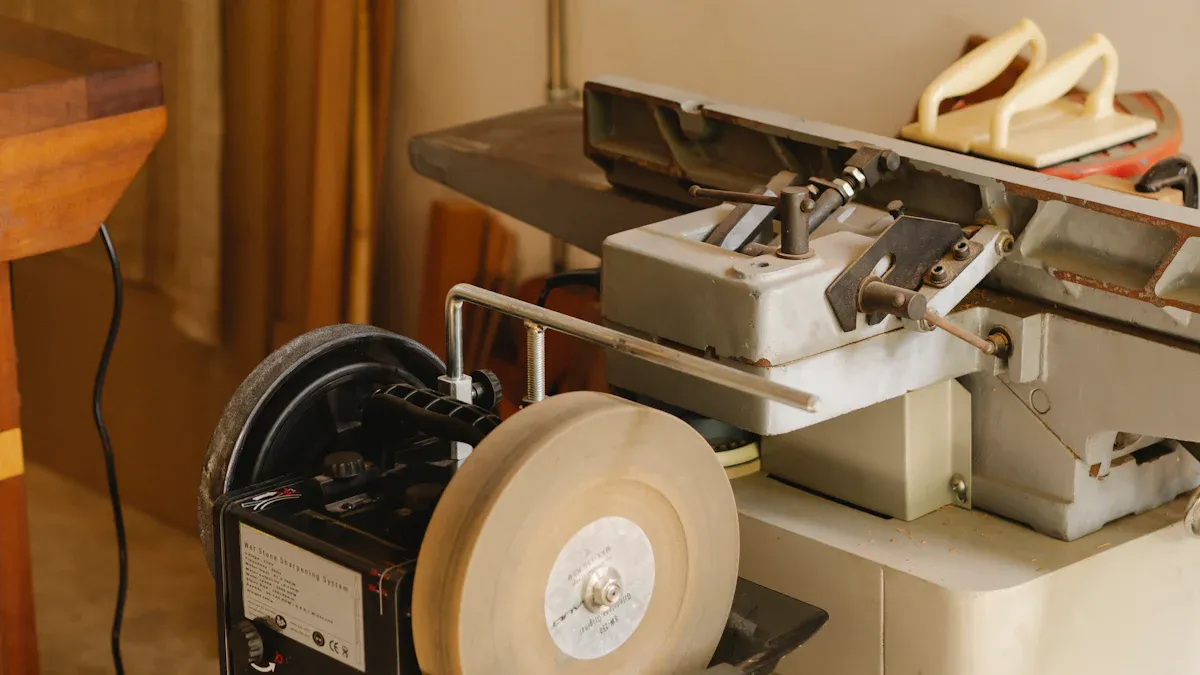
Choosing the right tool is essential for dressing your grinding wheel correctly. You have several options, each suited for different types of wheels and grinding tasks. Your choice will depend on the condition of your wheel and the finish you need.
Dressing Sticks and Sharpening Stones
Dressing sticks are a simple and effective tool for cleaning and sharpening your wheel. For superior results, you can use Aimgrind’s Sharpening Stones. Aimgrind offers high-quality stones made from materials like aluminum oxide and silicon carbide, which are ideal for dressing. The material you choose depends on the wheel you are sharpening.
| Dressing Stick Type | Preferred Application |
|---|---|
| Aluminum Oxide | Softer resin-bonded diamond tools, glass, and finer finishing. |
| Silicon Carbide | Coarse grits on ordinary vitrified wheels and some metal-bonded wheels. |
Star Dressers
You use a star dresser for aggressive dressing, especially on coarse-grained wheels. This long-handled tool has hardened steel wheels that you press against the spinning grinder.
How It Works ⚙️
The star-shaped cutters on the tool fracture the old abrasive grains and bonding material. This action quickly removes loading and exposes a fresh, rough surface perfect for heavy grinding.
Star dressers are most effective for:
- Coarse grit wheels used for offhand grinding.
- Segmental surface grinding wheels.
Diamond Dressers
A single-point diamond dressing tool offers the most precision. This tool uses an industrial diamond to carefully cut the wheel’s surface. The sharp point of the diamond creates a free-cutting surface. A key advantage is that you can rotate the diamond to maintain a sharp point for a long time.
When you use a diamond dressing tool, hold the diamond at a 10 to 15-degree angle to the wheel. This prevents the diamond tip from going dull. The quality of the diamond ensures you get a perfectly true and sharp grinding surface every time.
Sharpening the Knife vs. Sharpening the Wheel
It is important to understand the difference between using your grinder and maintaining your grinder. Sharpening the knife is an action you perform on a tool. Sharpening the wheel, or dressing, is a maintenance task you perform on the grinder itself. The goals for each task are completely different.
Using a Grinder to Sharpen Knives
When you sharpen knives, your goal is to create a fine, sharp cutting edge. You use the grinder to carefully remove material from the blade. However, using a standard bench grinder for sharpening knives can be tricky. You must avoid common mistakes to protect your tool and achieve a good result.
Be mindful of these issues when sharpening knives:
- Excessive Heat: A fast-moving grinder generates a lot of heat. This can ruin the temper of your blade, making the edge brittle.
- Improper Angle: You should not lay the blade flat. Instead, hold it at a consistent angle, usually around 20 degrees, to form the edge.
- Too Much Force: Let the grinder do the work. Pushing too hard can chip the blade or cause you to lose control.
Pro Tip 💡
When sharpening knives, always point the edge up. This technique helps prevent the edge from catching between the wheel and the tool rest, which could damage your blade and the grinder.
Using a Dresser to Sharpen the Grinder
Dressing your grinder has a different purpose than sharpening knives. Here, the goal is not to create a fine edge but to restore the grinding surface. You use a dressing tool to remove clogged material and dull abrasive grains. This action exposes a fresh, aggressive cutting surface on your knife sharpening wheels.
This sharpening process ensures your grinder performs efficiently and safely. A properly dressed wheel allows for cooler, faster grinding and gives you better control. You are essentially maintaining your equipment so it can perform its job, like sharpening the knife, effectively.
How a Grinding Wheel is Sharpened: A Step-by-Step Guide
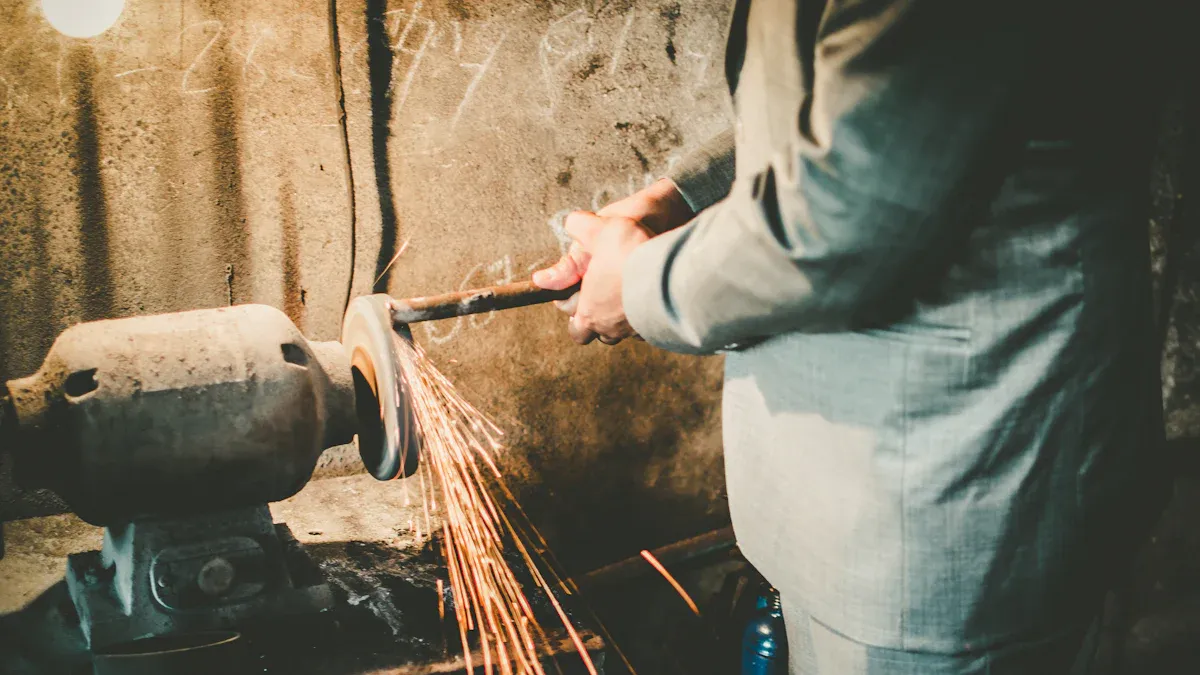
Dressing your bench grinder is a straightforward process. You can restore your wheel to perfect condition by following these steps carefully. This guide will show you the correct method for ordinary grinding wheel sharpening, ensuring both safety and effectiveness.
Step 1: Wear Proper Safety Gear
Your safety is the top priority. Before you even turn on the grinder, you must put on the correct personal protective equipment (PPE). The grinding process creates sparks, dust, and noise.
Safety First! 🛡️
Always protect yourself. Never operate a bench grinder without the proper gear. Also, be mindful of loose clothing, jewelry, or untied hair that could get caught in the machine.
Essential safety gear includes:
- Eye and Face Protection: Wear safety glasses with side shields. A full-face shield offers even better protection from flying debris.
- Respiratory Protection: Use a dust mask, like an N95, to avoid inhaling fine particles from the wheel.
- Hand Protection: Wear durable leather or cut-resistant gloves to protect your hands.
- Hearing Protection: A bench grinder is loud. Use earplugs or earmuffs to protect your hearing.
Step 2: Adjust the Tool Rest
Proper adjustment of the tool rest is a critical safety step. You must do this before you start the grinder. The tool rest provides a stable platform for your dressing tool. An incorrect gap can cause the tool to get jammed between the rest and the grinding wheel.
According to OSHA safety standards, you must adjust the work rest to have a maximum gap of 1/8 inch from the wheel face. You should also check the tongue guard (spark arrester), ensuring it has no more than a 1/4-inch clearance. A properly adjusted bench grinder is a safe bench grinder.
Step 3: Bring the Grinder to Full Speed
Turn on the grinder and let it reach its full operating speed. You should stand to the side, not directly in front of the machine, as it powers up. A damaged wheel is most likely to fail during startup. Waiting for the grinder to reach full speed ensures it is stable before you begin the sharpening process.
Step 4: Apply the Dressing Tool
Now you can begin dressing the wheel. Hold your dressing tool firmly with both hands. Brace the tool securely against the tool rest for maximum stability and control. This prevents the tool from slipping or chattering against the wheel.
Gently bring the dressing tool into contact with the spinning grinding wheel. You only need to apply light to medium pressure. Let the tool do the work. You are not trying to stop the wheel, just remove the outer layer of loaded or glazed abrasive. This is the core of the dressing skill of grinding wheel maintenance.
Step 5: Move Evenly Across the Wheel Face
You need to move the dressing tool smoothly and steadily across the entire face of the wheel. Move from one side to the other and then back again. The speed of your movement is important for a good result.
- Moving too slowly can generate tremendous heat. This can cause the surface to rub or burnish instead of becoming sharpened.
- Moving too quickly can put too much stress on the wheel. This may cause chipping or create an uneven surface.
A consistent, even pace is key to a successful grinding operation. This ensures the entire surface is dressed uniformly.
Step 6: Inspect the Dressed Surface
After a few passes, turn off the grinder and wait for it to stop completely. Now, you can inspect your work. A properly sharpened wheel will have a fresh, uniform appearance.
You can check the surface in a few ways:
- Visual Check: The surface should look clean and “frosty,” with no shiny or dark spots.
- Marker Test: Before grinding, you can draw a line across the wheel with a marker. After dressing, the ink should be completely gone. Any remaining ink indicates a low spot.
- Test Run: Once you are satisfied, turn the grinder back on. The bench grinder should run smoothly without any noticeable vibration. A clean, cool cut on a scrap piece of metal confirms your grinding wheel is ready for use.
Remember, “sharpening” your grinding wheel is a maintenance process called dressing. This task is vital for safe and effective grinding. You can keep your wheel in top shape by spotting a loaded surface, selecting the right tool like an Aimgrind sharpening stone, and following the correct dressing steps. A properly sharpened wheel delivers significant benefits.
- Better Grinding: You get faster, cooler grinding with less effort.
- Longer Wheel Life: Regular maintenance extends the life of your wheel.
For every precision task, remember to Grind with Passion, Achieve with Aim.
FAQ
What is the difference between dressing and truing?
You dress a wheel to clean its surface and expose fresh abrasive grit. You true a wheel to correct its shape and make it perfectly round. Dressing cleans the wheel’s face, while truing restores its concentricity for smooth, vibration-free operation.
How often should you dress a grinding wheel?
You should dress your wheel whenever you notice it is loaded, glazed, or out-of-round. There is no fixed schedule. Inspect the wheel before each use. Regular dressing ensures your safety and provides better grinding results every time you work.
Can you use any sharpening stone to dress a wheel?
You must use a dressing stone made of a harder material than your grinding wheel’s abrasive. For example, you use silicon carbide stones for common aluminum oxide wheels. Choosing the correct material ensures you effectively sharpen the wheel’s surface.
What happens if you never dress your grinding wheel?
An undressed wheel becomes loaded or glazed. It will generate excess heat, cut poorly, and create a bad finish on your workpiece. A neglected wheel can also become unbalanced, creating a serious safety hazard during operation.
Contact Us
For More Grinding Solution or Customized Abrasive Tools


